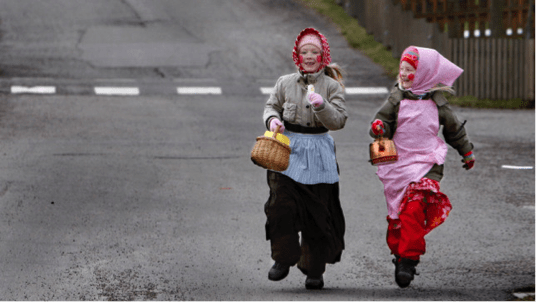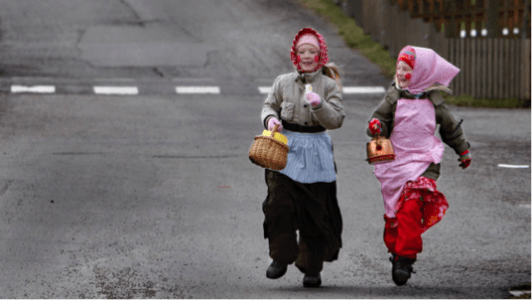How do you celebrate Easter in your country? That’s the question we asked to some of our students from Italy, France, Ireland, Germany, Ukraine and Spain.
Italy: “The number of Easter eggs is what characterizes us”
Martina, what do you do in Italy for Easter?

In my beloved country, we usually eat a lot during the Easter holidays, especially chocolate. I think what characterizes us is the quantities of Easter eggs we have, as you can see in the picture below.
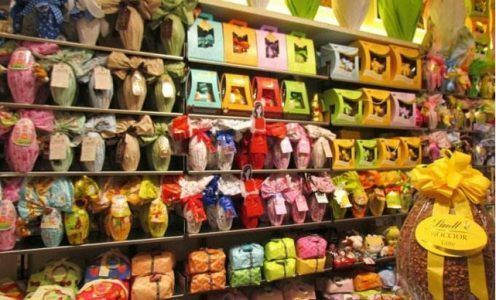
Normally they are given to children and they can find surprises inside, which are usually toys. But, truth be told, adults also appreciate it a lot.
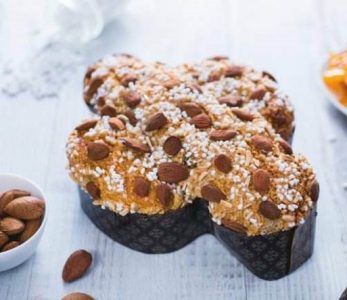
On Easter Day, we usually eat what is called “Colomba Pasquale”. It’s Delicious. SOME FAMILIES eat it WITH SAUSAGE AND COOKED Eggs.
It helps us to start the day well, full of energy, because in the afternoon children start the easter egg hunt. Children go to private gardens or city parks looking for small chocolate eggs or bunnies.
France: Silence! Easter eggs are coming from Rome.

Léa Louise, tell us what happens with the bells in your country
They stop ringing because they are in Rome. A legend says that they go on Thursday night and return in the night from Saturday to Sunday, scattering Easter eggs in the gardens on their way back. Therefore, on Easter Sunday the children wake up and go to the garden to look for the chocolates.
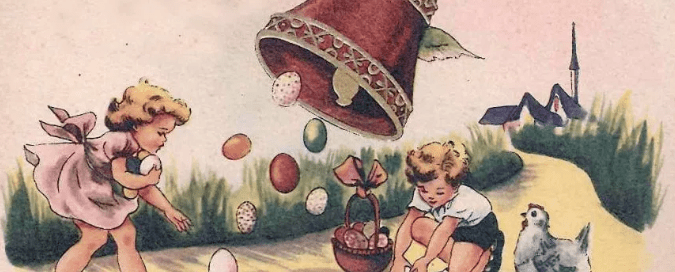
I did a little research on why? and that’s what I found:
The tradition of the Easter bells began around the 7th century in Europe.
At that time, the Church prohibited the bells from ringing as a sign of mourning between Holy Thursday and Easter Sunday to commemorate the time between the death of Christ and the resurrection. In order to to replace the sound of the bells to call worshippers to the church, kids us to use wooden ratchet in the streets.
The legend, in some Catholic countries and particularly in France, states that on the afternoon of Holy Thursday, they go to Rome where the Pope blessed them. On Easter morning, the bells return in a carillon to announce the joy of the resurrection of Christ. In Rome, they are loaded with Easter eggs, which they scatter on their return to the gardens. The children will pick them up. For the trip, the bells are provided with a pair of wings, ribbons or are transported in a tank.
In France Easter is a family day. We eat a lot of food and it’s the perfect occasion to gather the family. Traditionally the menu consists in a first dish with seasonal vegetables and eggs, although the most characteristic is the main course, the traditional leg of lamb.
During this special day, the favorite moment of the children is without a doubt the treasure hunt in the garden where several chocolates are hidden (officially by the bells, unofficially by the parents).
Ireland: Chocolate, chocolate and more chocolate
Séan, what about Ireland?
Irish Resurrection Sunday is celebrated in a very sweet way too. We also buy lots of chocolate eggs and hide them in the garden for the children. The houses are decorated with Easter Bunnies and trees with painted eggs. Certainly Easter has its similarities with Christmas and as we see it, even in traditions we can find parallels like these magnificent decorated trees. My sister sent me these pictures of her house in Ireland, she loves to decorate for Easter.
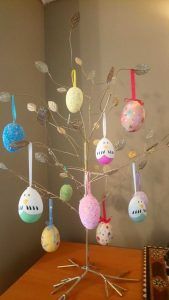
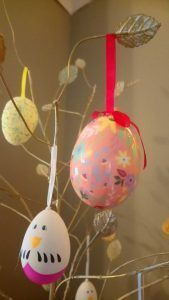
Germany: Verstecken-Suchen-Finden
Stefan, easter eggs hunt is a big thing in Germany too, isn’t it?
Exactly, in Germany this tradition is called Verstecken-Suchen-Finden with could translate to hide, search and find easter eggs, although, more than eggs we often hide the traditional chocolate Osterhase (rabbit-shaped chocolate). The most typical is the well-known Lindt’s golden rabbit.
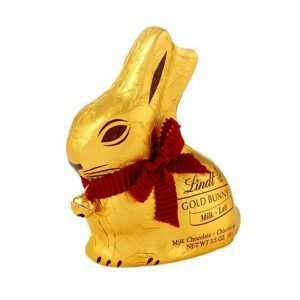
There is also another tradition more ancient and familiar, which is to paint eggs. The first thing you do is empty the eggs to remove the stuff from inside (in German this is called ausblasen), which is a quite process if you do not want to break the egg.
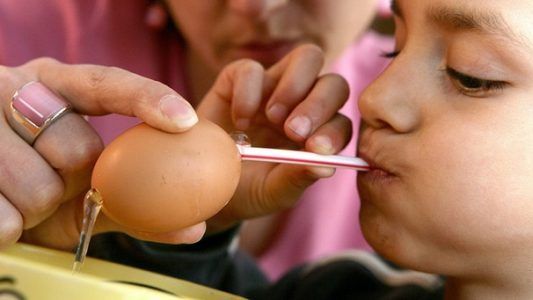
We empty the eggs to make it lighter in order to be able to hung them in the tree as a decoration. Another reason why we empty the eggs is that otherwise they would rot. Once emptied, they are painted with different colors and hung on a small tree, which ends up looking very similar to Christmas, but with multicolored eggs. Like this tree from the Kraft family that is decorated with more than 1000 Easter eggs.
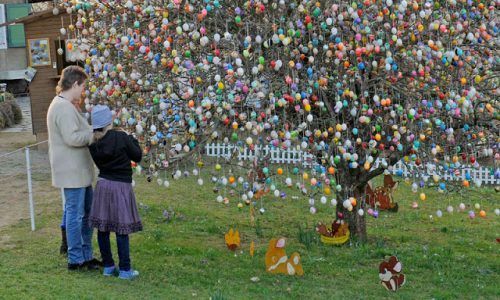
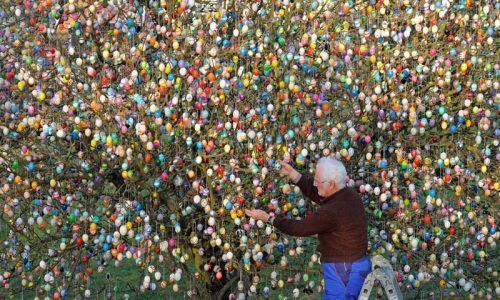
Sweden: Eggs, salmon and witches
Elias, we saw some pictures of Easter from your country and it looks a lot like Halloween, tell us why?

On Holy Thursday kids dress up as Easter witches, same as Halloween, and go from house to house in the neighborhood to exchange Easter postcards and receive candy in return.
Do you have a special Easter dish?
In Sweden, we also celebrate Easter with food. The most common thing on the table is eggs and salmon with different kind of toppings, such as caviar and salad.

Ukraine:
Anastasia, what is Pysanka?

Pysanka is our Ukrainian Easter egg, painted with very nice designs as you can see in the photo below.
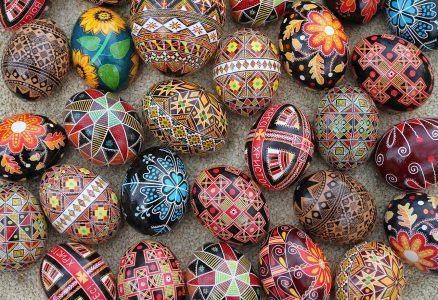
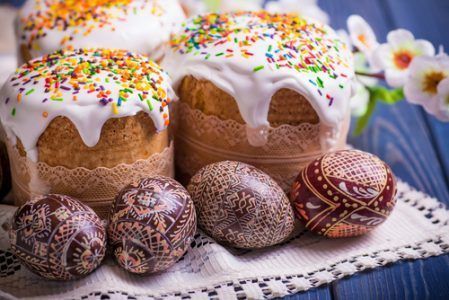
I also found this other video about the painting of the eggs:
Spain:
Juan, in your university you are more than 70 nationalities, can you explain how Easter is lived in Spain?
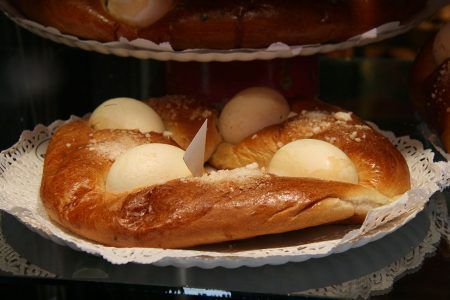
In Spain we also celebrate easter eating. The Easter cake is different depending on the region of Spain you live in. In Catalonia, for example, it is a handmade chocolate figure that can have the shape of a cartoon, for example, and is usually given by godparents to godchildren. They can become giants and are usually quite expensive because you usually buy it in a chocolate shop or traditional bakery. Here in the Valencian Community, the easter cake is like a small bun with an egg, originally cooked but now most of the time it’s replaced with a chocolate egg. Like many other holidays in Spain, the typical way to celebrate the Easter involves food and sweets.
What about you? How are you going to celebrate Easter?



